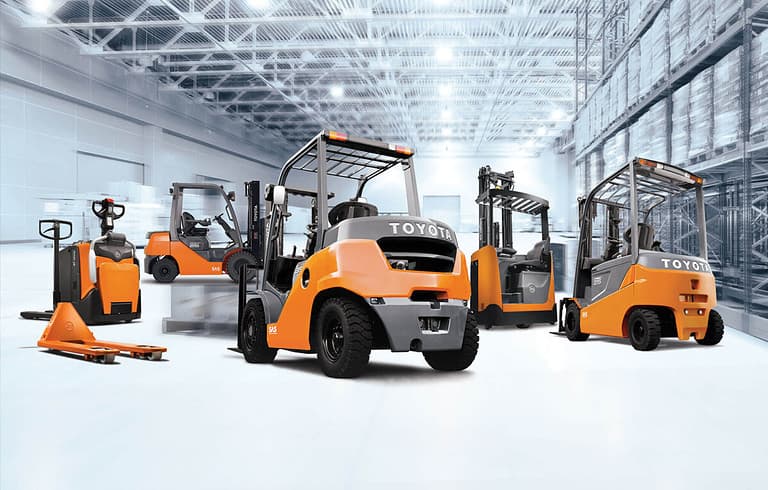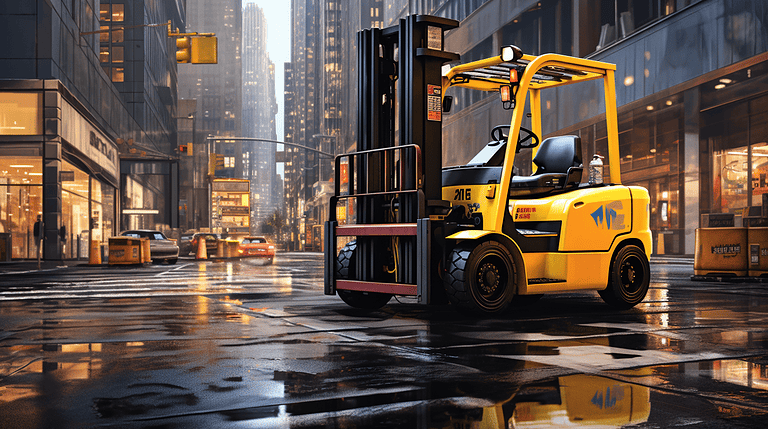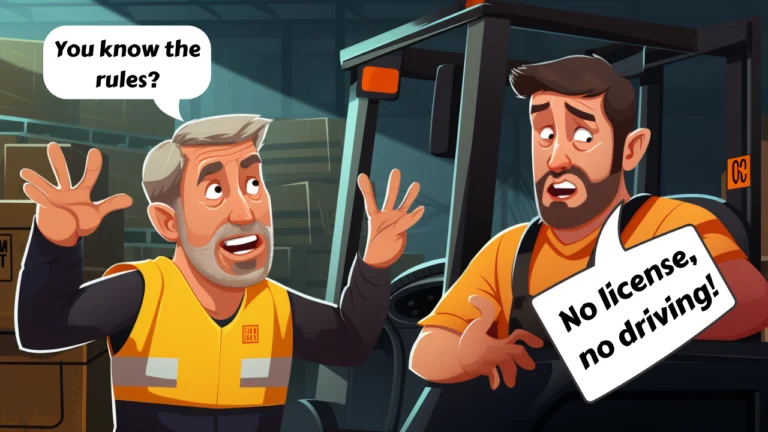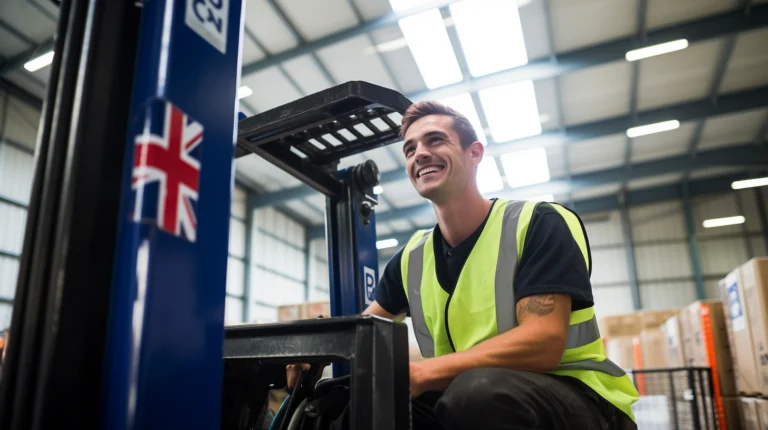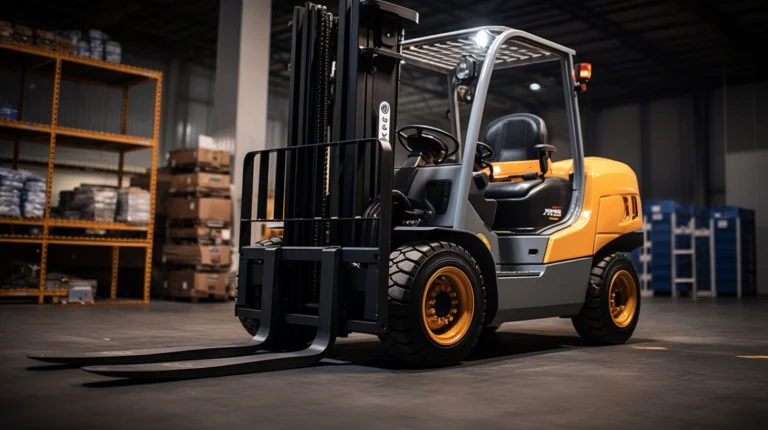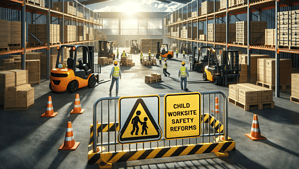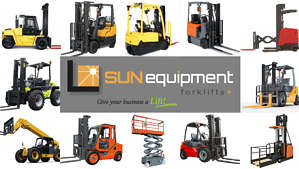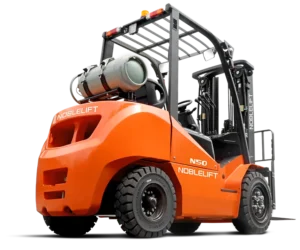Summary: Bobcat’s strategic “Bobcat Material Handling Expansion” acquires industry leader Doosan Industrial Vehicle (DIV) to diversify its rugged equipment portfolio and pioneer eco-friendly forklift innovations. The $4.3B deal cements Bobcat’s growth in material handling by inheriting DIV’s expertise and expanding its global manufacturing infrastructure.
Key Takeaways
- Bobcat cements expansion into material handling, acquiring respected industry leader Doosan Industrial Vehicle (DIV)
- The merger combines Bobcat’s durability and global distribution with DIV’s 50+ years of lift truck and warehouse solutions expertise.
- Manufacturing boost adds facilities in South Korea, China, and Germany to increase supply capacity.
- Acquisition diversifies Bobcat’s portfolio to include a complete range of forklifts from 1 to 16 tons, plus automated tech.
- Hydrogen fuel cell and lithium battery prototypes on the horizon signify a commitment to pioneering eco-friendly innovations.
Overview of Bobcat Material Handling Expansion
The Bobcat company has cemented itself as a compact equipment and machinery leader over the past seven decades. Founded in 1947, Bobcat gained fame and loyal customers for its durability and versatility, becoming a household name in sectors like construction, agriculture, landscaping, and waste management.
The logistics market has recently acquired a new brand of forklift trucks: Bobcat. This encapsulates an exciting new chapter for Bobcat, which has now expanded into the material handling domain.
Through the strategic acquisition of Doosan Industrial Vehicle (DIV) in 2021, Bobcat has integrated a specialized range of warehousing equipment and forklift solutions, signaling a monumental Bobcat Material Handling Expansion and ambitious growth into a parallel market.
This article will analyze Bobcat’s pivotal expansion…
Historical Context and Evolution of Bobcat and DIV
Bobcat’s origins date back to 1947 when the Melroe brothers founded the company focused on agriculture and light construction equipment. Their skid-steer loader, launched in the late 1950s, gained immense popularity for its ability to maneuver in tight spaces. Through the following decades, Bobcat cemented durability and performance as core pillars of their brand identity.
While Bobcat dominated compact machinery, the foundations for DIV were being established half a world away. 1968 marked the genesis of material handling equipment under South Korea’s Daewoo Group, which later operated under the Doosan Corporation.
Doosan gradually made critical acquisitions over the next few decades, even weathering the Asian financial crisis of the late 90s. In the 2000s, the company rebranded itself as Doosan Infracore, which is dedicated to construction equipment and engines.
This period marked the focused development of advanced forklift and warehousing technologies, ultimately culminating in the Doosan Industrial Vehicle (DIV) launch in 2011.
With complementary expertise in compact machinery and material handling equipment, Bobcat and DIV were primed for an impactful convergence of brands that would soon transpire.
Strategic Integration of DIV into Bobcat
The strategic integration of DIV into Bobcat’s portfolio proved to be a natural progression for both brands. While Bobcat boasted an unparalleled global distribution channel covering over 90 countries, DIV offered specialized strength in the material handling domain – having spearheaded lift truck and automated warehouse solutions technology for over 50 years.
The acquisition deal valued at $4.3 billion was finalized in 2021, transitioning DIV to operate under the umbrella of Bobcat and its parent company – Doosan Bobcat. Beyond diversifying product lines, the integration enabled both entities to leverage complementary capabilities for accelerated growth and maximum industry impact.
For Bobcat, it meant inheriting an extensive range of diesel, LPG, and electric forklift models with lifting capacities from 1 to 16 tons. This provided a ready-to-sell portfolio of warehouse equipment solutions, including pallet trucks, reach trucks, and automated guided vehicles (AGVs) – all technologies DIV had been perfecting for years.
On the other hand, DIV benefited from plugging into Bobcat’s well-established dealer network that spanned six continents, providing unrivaled market access globally.
Most prominently, the integration signaled a shared vision between the two companies – to accelerate innovation in material handling equipment technologies that emphasize environmental sustainability without compromising productivity or safety.
By consolidating R&D resources, Bobcat and DIV could pool investments in developing cutting-edge solutions like hydrogen fuel cell-powered forklifts.
The deal also initiated a comprehensive rebranding operation – retiring the Doosan brand identity to adopt Bobcat’s trademark colors and logo across the acquired products.
Additional structural changes included DIV factories in South Korea, China, and Germany, now operating under the ownership and strategic guidance of Doosan Bobcat.
From specialized manufacturing processes to customer experience touchpoints, every facet of the newly merged entity was optimized to create a consistent brand presence for Bobcat in yet another essential industry.
Product Portfolio and Innovations
This Bobcat Material Handling Expansion gives customers access to faster, more eco-friendly electric forklifts and the company’s first hydrogen prototype model.
Integrating Doosan Industrial Vehicle’s material handling equipment has significantly expanded Bobcat’s product range for logistics, warehousing, and manufacturing operations.
Customers now have access to a comprehensive equipment selection:
- Diesel Forklifts (2 – 16 ton capacity): Robust, heavy-duty models powered by a high torque diesel engine, making them suitable for outdoor heavy load handling.
- LPG Forklifts (2 – 7 tons): Powered by liquefied petroleum gas, these provide a cleaner emission alternative to diesel for medium workload material movement.
- Electric Forklifts (1.2 – 10 tons): Battery-driven electric forklifts, including three-wheel variants for light tasks, provide zero local emissions for indoor/enclosed environments focused on sustainability.
In addition, to counterbalance lift trucks, Bobcat has incorporated automated guided vehicles (AGVs), pallet trucks, reach trucks, and stackers to fulfill everyday warehouse needs.
At the recent LogiMAT 2023 trade show in Germany, Bobcat showcased their latest forklift – the 8-10 ton capacity B80NS powered by lead-acid batteries.
However, all eyes were on the company’s prototype hydrogen fuel cell unit, dubbed the B30X-7 Plus, slated to launch commercially by 2025.
Fueled by pressurized hydrogen to generate electricity, this forklift aims to deliver extended runtimes with rapid refueling and zero carbon emissions, aligning with global net-zero targets.
Bobcat has affirmed their commitment to unleash 5 new electric forklift variants and push hydrogen-based propulsion, indicating that sustainable material handling is integral to their vision.
With economies of scale through Doosan’s channels, the company can accelerate its development timelines to market newer innovations focusing on customer performance metrics – load capacity, operation time, and maneuverability.
By providing equipment catering to each business application paired with a forward-thinking roadmap to pioneer the commercialization of hydrogen power and lithium battery capacities, Bobcat has a compelling edge to dominate in eco-friendly material handling technology.
Manufacturing and Global Reach
The acquisition has provided Bobcat an extensive manufacturing infrastructure and a broader global footprint to supply their expanded range of material handling equipment to customers worldwide.
Central to the merger are the modern DIV production facilities in strategic locations like Incheon, South Korea, and Yantai, China, which now function under Bobcat ownership. The Korea site produces over 100,000 lift trucks annually, while the Yantai factory has a capacity exceeding 80,000 units. Equipment built at both locations is exported globally.
Additionally, Bobcat inherited DIV’s specialized factory in Lübben, Germany, which manufactures warehouse equipment like pallet trucks and stackers for the European markets.
These efficient, high-tech facilities provide sufficient scale to meet demand across regions and consistency in quality control and production standards. Localized manufacturing bolsters access to regional supplier ecosystem relationships as well.
Bobcat and DIV boast a presence in over 90 countries worldwide through 9 manufacturing plants and over 100 dealerships, ensuring comprehensive customer sales and service coverage globally. Recently, Bobcat announced plans to construct new assembly lines integrated with Industry 4.0 data capabilities.
The expanded footprint paves the way for Bobcat to broaden its material handling sector impact through unmatched international distribution and support channels to back its reliable, innovative equipment as adoption grows.
Investment in Infrastructure and Modernization
To optimize operations and customer experience, Bobcat has committed over $2 million towards infrastructure upgrades and modernization of Doosan Industrial Vehicle’s existing facilities in Sint-Niklaas, Belgium, which served as the European headquarters.
Renovation efforts will refresh the office spaces with Bobcat’s signature colors and corporate branding, creating a consistent aesthetic. But more importantly, expanding the warehousing capacity along with installing new vehicle lifts and a test track area aims to bolster the service delivery capacities in the region.
The infrastructure boost also accounts for digital systems transformation to harness data for generating business insights, predictive maintenance, and training self-driving lift truck capabilities. Advanced analytics platforms will empower managers to make timely decisions.
Additional investments have been funneled into the Korean production sites to incorporate innovative factory capabilities leveraging IoT sensors, autonomous robots, and cloud-based monitoring to enable greater control over quality assurance and supply chain agility.
Between boosting the physical infrastructure and digitizing back-end processes, the capital injections cement Bobcat’s commitment to leading in the material handling domain through service excellence built on the foundation of a connected, resilient, and modernized operational environment.
Future of Material Handling with Bobcat
Bobcat’s strategic expansion into material handling, integrating the expertise and resources of Doosan Industrial Vehicle, has effectively established the company as an emerging force within warehouse equipment and forklift technologies.
Industry observers have hinted at ambitious plans for Bobcat to unleash around 5 new electric forklift variants by 2025. Combined with scheduled launches of fuel cell-powered prototypes, Bobcat clearly prioritizes sustainable innovation as a critical pillar.
Autonomous lift truck capabilities are also under development, signaling intentions to disrupt existing paradigms for warehouse optimization. With scalability through DIV’s production bandwidth, Bobcat can comfortably accelerate research projects focused on customer pain points – enhancing safety, maximizing runtimes, or integrating predictive analytics for efficient fleet maintenance.
While competitors play catch up with electrification, Bobcat’s push towards hydrogen adoption and intelligent software features means they are in a prime position to shape the future of the material handling equipment landscape – one centered around environmental responsibility without compromising durability, efficiency, or performance.
Conclusion
Bobcat’s strategic Bobcat Material Handling Expansion through acquiring Doosan Industrial Vehicle in 2021 signifies ambitious expansion into material handling, leveraging decades of compact machinery success combined with DIV’s rich legacy pioneering lift trucks and warehouse solutions.
This cements Bobcat as a one-stop equipment provider for diverse sectors – uniquely positioned to equip customers with sustainable, future-thinking innovations.
Doubling down on customer-centric modernization efforts while inheriting DIV’s specialized expertise and production infrastructure reinforces Bobcat’s instrumentality in accelerating material handling industry’s adoption of efficient, eco-friendly technologies without compromising durability.
Sources
https://www.internationalrentalnews.com/news/bobcat-makes-material-handling-move/8033637.article
https://www.mordorintelligence.com/industry-reports/forklift-trucks-market
https://www.toyotaforklift.com/resource-library/blog/energy-solutions/hydrogen-fuel-cell-forklifts-an-alternative-energy-solution
https://www.ivtinternational.com/news/materials-handling/bobcat-enters-material-handling-market.htm
https://www.businessnewsdaily.com/10156-industry-manufacturing-iot.html
https://www.ptc.com/en/blogs/corporate/digital-transformation-examples-enterprise
https://www.mmh.com/article/autonomous_lift_trucks_emerge



